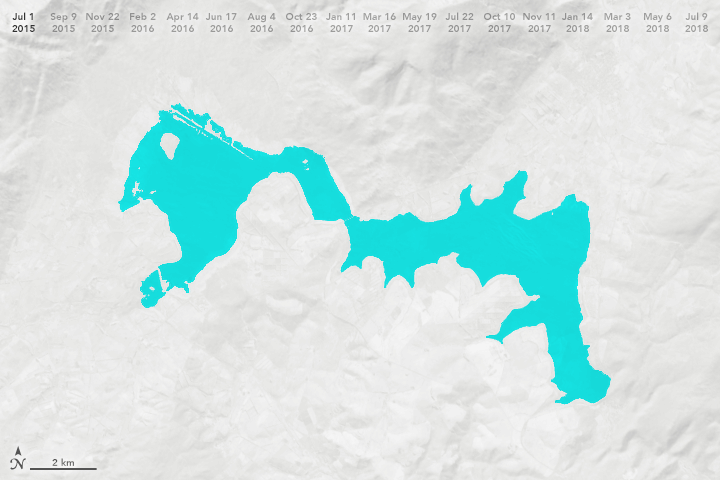Water in Cape Town, South Africa, is on the rebound

Today’s Image of the Day from NASA Earth Observatory shows how the water reservoirs of Cape Town, South Africa, have recovered after massive amounts of rainfall in the last few months. Water in Cape Town, South Africa, is on the rebound
Theewaterskloof, the city’s largest reservoir, was 55 percent full in 2015 but dropped to 13 percent by January 2018 – as Cape Town braced itself to become the world’s first city to turn off water.
Heavy rainfall in April of this year has filled the main reservoir back up to 40 percent. The city will continue to keep water restrictions in place until the reservoirs are 85 percent full. Water in Cape Town, South Africa, is on the rebound
South Africa, officially the Republic of South Africa (RSA), is the southernmost country in Africa. It is bounded to the south by 2,798 kilometres (1,739 mi) of coastline of Southern Africa stretching along the South Atlantic and Indian Oceans; to the north by the neighbouring countries of Namibia, Botswana, and Zimbabwe; and to the east and northeast by Mozambique and Eswatini (Swaziland); and it surrounds the enclaved country of Lesotho. South Africa is the largest country in Southern Africa and the 24th-largest country in the world by land area and, with over 58 million people, is also the world’s 24th-most populous nation. It is the southernmost country on the mainland of the Old World or the Eastern Hemisphere. About 80 percent of South Africans are of Bantu ancestry, divided among a variety of ethnic groups speaking different African languages, nine of which have official status. The remaining population consists of Africa’s largest communities of European, Asian (Indian), and multiracial (Coloured) ancestry.
—
By Chrissy Sexton, Earth.com Staff Writer
Image Credit: NASA Earth Observatory
News coming your way





















